Rob Stallard led a walk around Woodcote on the morning of Wednesday 15 November, starting from the Highwayman at Exlade Street, between Woodcote and Checkendon. It was a beautiful sunny morning, following copious amounts of rain on the preceding days. Redwings were heard while the group were gathering. Turning left out of the car park, the walk started out along the lane, before turning left again to follow a footpath which crossed the busy Woodcote by-pass and then led across the playing fields of the Oratory School. Rob gave a brief history of the school and its buildings. A short stretch of road within the school grounds would have led to the next section of the route – but it wasn’t a public right of way, so instead the group had to walk round three sides of a rectangle. Flowers seen here included Bristly Ox-tongue, Red and White Dead-nettle and Oxeye Daisy. After walking a short distance along Reading Road, the route turned left along Tidmore Lane. The hedgerows were red with berries, particularly on Holly and Hawthorn. An unusual Holly bush had red berries but no obvious leaves. The next stage of the walk followed another footpath northwards, passing through the garden of an old thatched cottage. Fungi seen beside the path included Tawny Funnel Lepista flaccida, Amethyst Deceiver Laccaria amethystina, Butter Cap Collybia butyracea and Chemical Knight Tricholoma stiparophyllum. There followed a second crossing of the Woodcote by-pass with its dangerously fast traffic. Distant views of the Oxfordshire countryside opened up to the west, prompting nostalgic comments about the much reduced Didcot power station. On the right of the path along a former hedge line was a contorted Oak, with multiple stems joining together and splitting apart. A Beefsteak Fungus Fistulina hepatica was growing amongst its roots. The path led to North Grove, a 20 ha area of ancient semi-natural woodland belonging to the Woodland Trust. Fungi found along this part of the walk included Clouded Funnel Clitocybe nebularis, Common Puffball Lycoperdon perlatum, Stump Puffball L. pyriforme and Bay Polypore Polyporus durus. Close to the entrance to the wood was a big chalk pit where it could be seen how close the Chalk was to the surface. Pale leaves on the ground betrayed the presence of Whitebeam trees. The party became more and more strung out, as the fungus hunters lagged behind. It was agreed that everyone would walk straight to the western end of the wood without stopping, then there would be a fungus hunting session while steps were being retraced. At the western end of the wood, the closed canopy woodland was dominated by Beech trees whose orange and golden leaves, both on the ground and still on the trees, were at their autumn best in the sunshine. A significant number of Coral-type fungi Clavulina sp were poking their way upwards through the leaf litter. Other finds here included Blackening Brittlegill Russula nigricans, Wood Blewit Lepista nuda with a violet tinge to its gills, Rosy Bonnet Mycena rosea, Magpie Inkcap Coprinopsis picacea, White Knight Tricholoma album, White Spindles Clavaria fragilis and White Saddle Helvella crispa. The walk continued along the south-east side of the wood, with open farmland to the right. A large mushroom with some yellow in its stem-ring whose cap bruised yellow was identified as Yellow Stainer Agaricus xanthodermus. Nearby, Yellow Brain Tremella mesenterica, a yellow jelly fungus, was found on a fallen branch. At the side of the path were four seed spikes of Violet Helleborine.The path emerged from the woods near a group of cottages. Dense Laurel had been cut down, revealing a stump with a lot of Sulphur Tuft. The walk continued along Corker’s Lane, before following another footpath south across grassy pasture, dropping steeply downhill and emerging near The Highwayman. A Raven flew calling higher up the hillside. Most of the party then stayed at the pub for lunch.
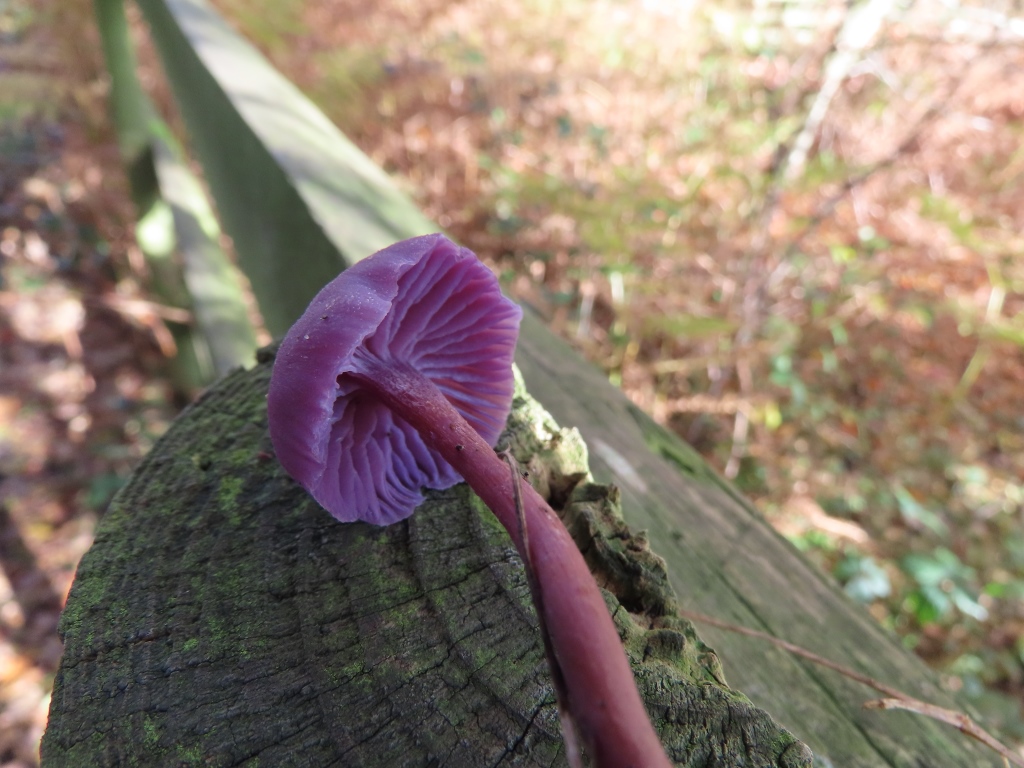
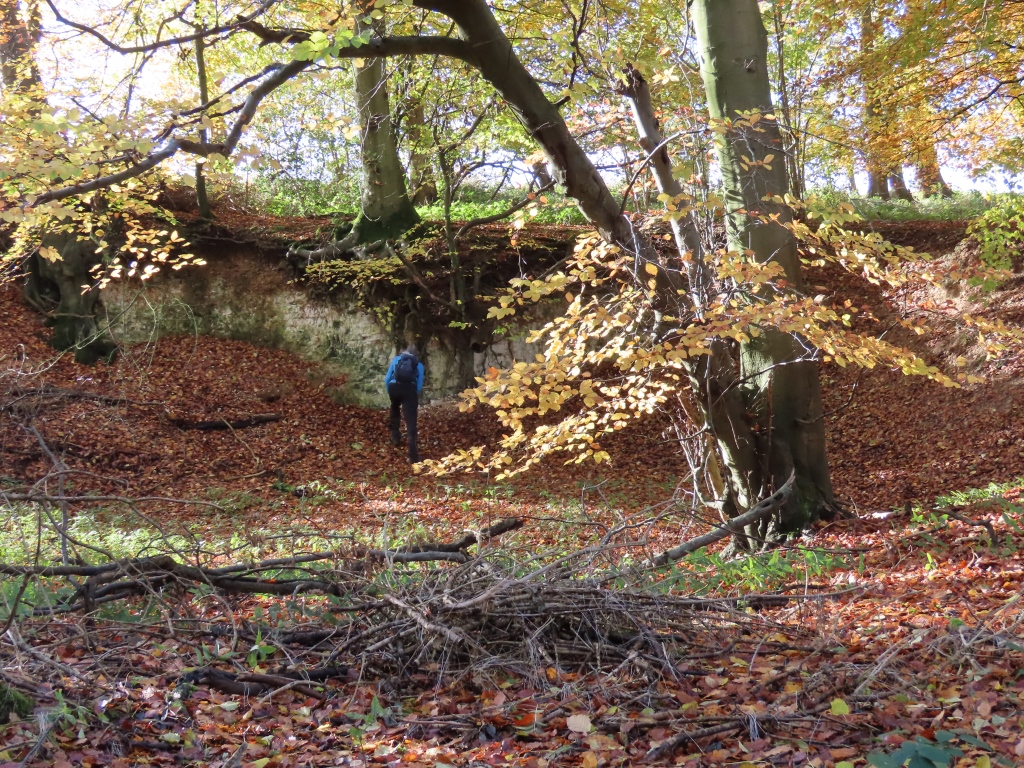

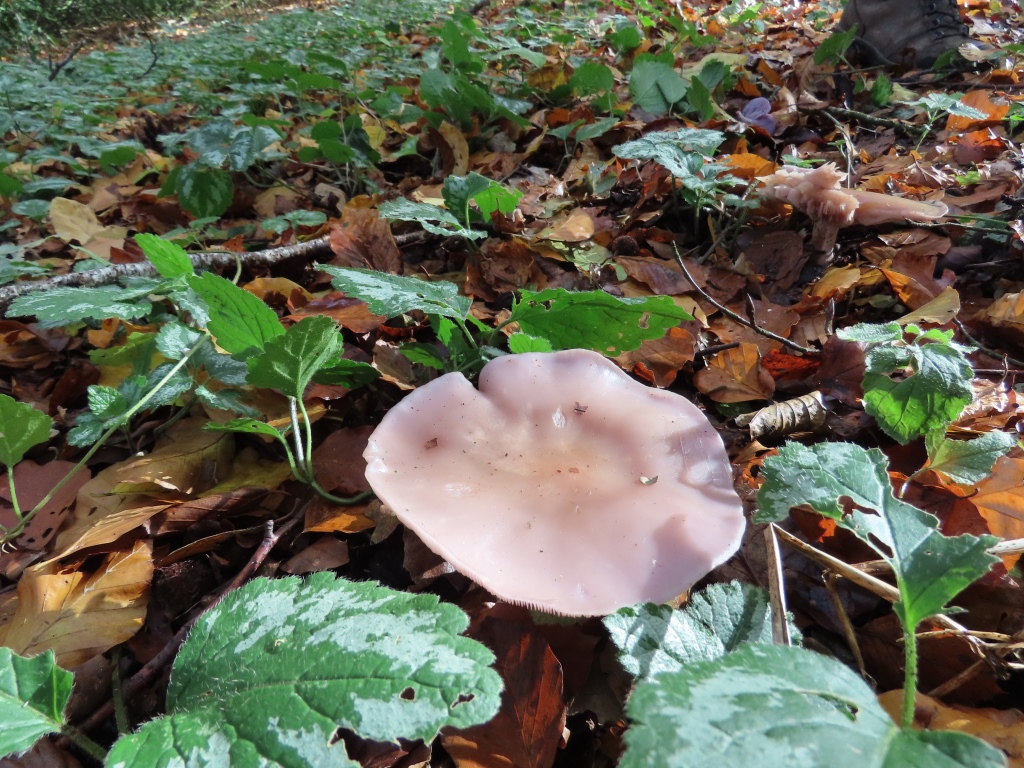
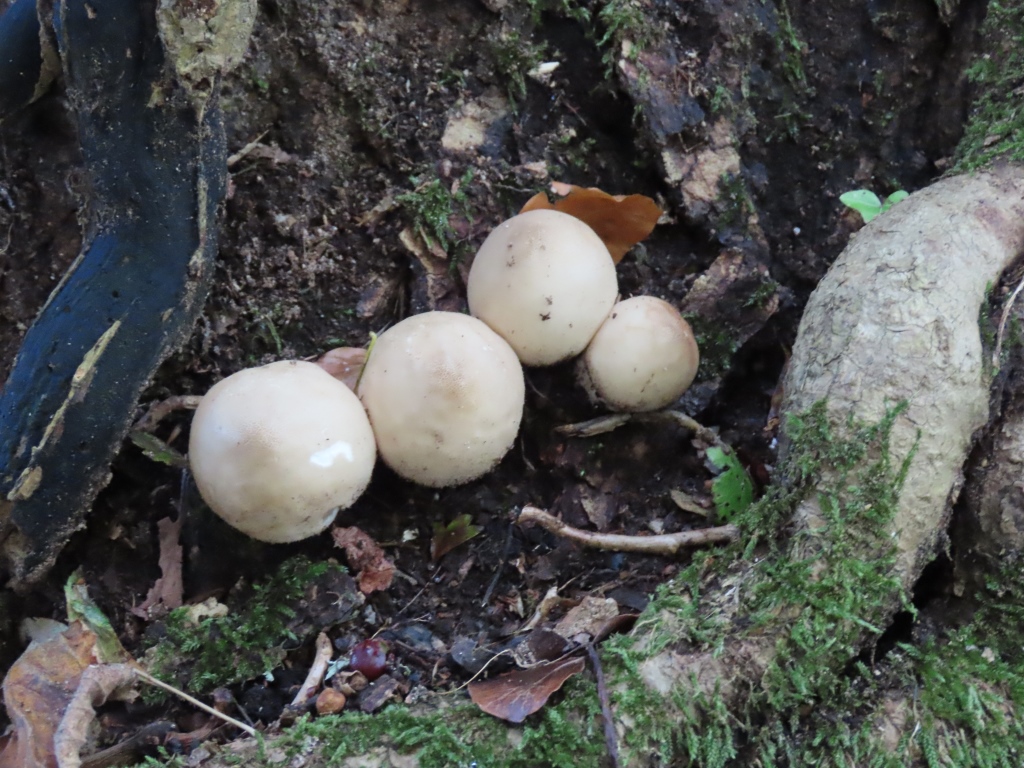
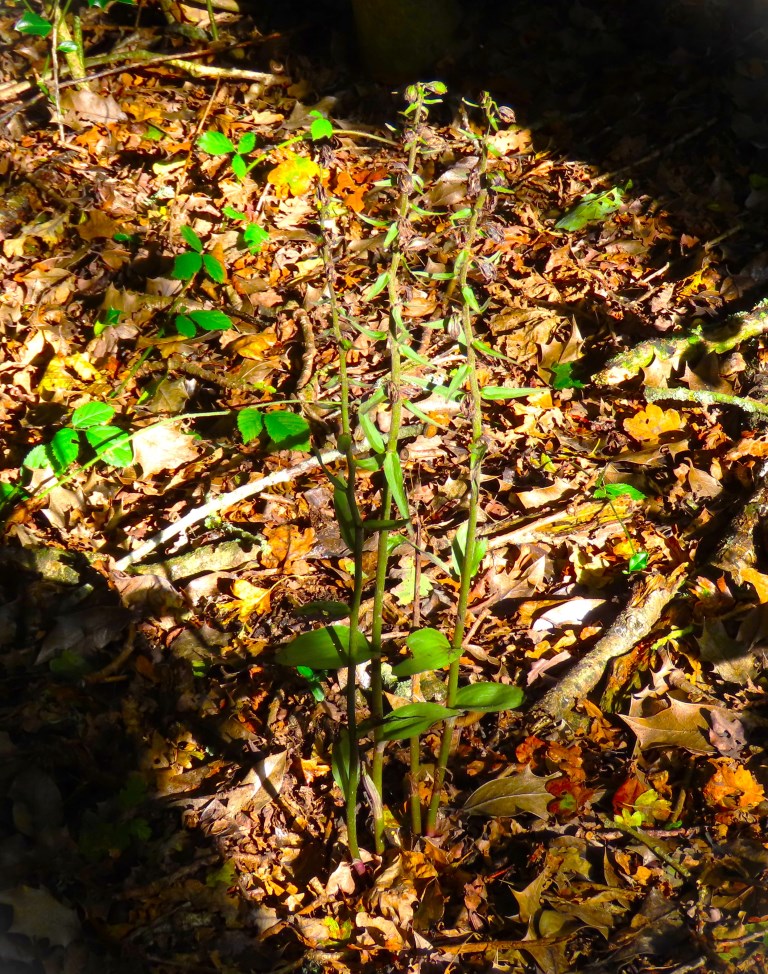
Pictures by Fiona Brown
